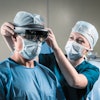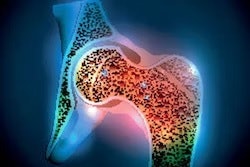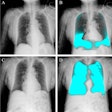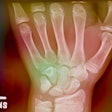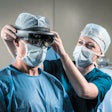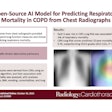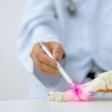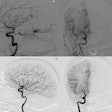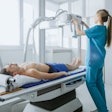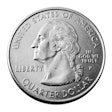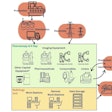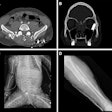An AI model that detects low bone mineral density (BMD) on ankle and foot x-rays could be useful for screening for osteoporosis, according to radiologists at MD Anderson Cancer Center in Houston.
Given that gold standard dual-energy x-ray absorptiometry (DEXA) scans are underused in screening, the tool could be used opportunistically, the researchers noted.
“There are no costs related to opportunistic screening, because patients received these radiographs of the foot and ankle for some other purpose,” wrote co-authors Farid Gharehmohammadi, MD, and Ronnie Sebro, MD. The study was published February 4 in the European Journal of Radiology.
While BMD testing is recommended for females 65 years and older, for males over the age of 70, and for younger individuals 50 years and older based on risk factors, only 20 to 48 % of patients at risk for developing low BMD are routinely screened using DEXA, the authors explained.
Conversely, millions of x-rays of the foot or ankle are obtained annually for evaluating patients for fractures after trauma or for arthropathy or infection. Moreover, x-rays of the same region obtained at different energies are somewhat analogous to DEXA scans, which work by comparing the relative attenuation of two different energy x-ray beams as they travel through bone, the researchers wrote.
Thus, the researchers aimed to create what they noted is “the first deep learning model” to evaluate radiographs of the foot and ankle to screen for osteoporosis and osteopenia.
First, the team culled a dataset from 907 patients over 50 years old who had undergone both DEXA scans and x-rays within 12 months. The dataset included 3,109 x-rays, with 80% used to train the model and 20% held separate to test it. Approximately 81% of patients had low BMD and 18% did not.
Next, using a customized architecture, the team developed a novel deep learning (DL) model that extracted deep features related to BMD from the x-rays. While multiple images per patient were used to create the model, only a single image per patient was used to subsequently test the model’s performance for differentiating x-rays with low versus normal BMD, the authors noted.
Metrics for evaluating the model included area under the curve (AUC), sensitivity, specificity, accuracy, positive predictive value (PPV), and negative predictive value (NPV).
| Performance of a DL model for predicting low or normal BMD on foot or ankle x-rays | |
|---|---|
| Metric | Performance |
| AUC | 87% |
| Sensitivity | 89.9% |
| Specificity | 83.6% |
| Accuracy | 89.9% |
| PPV | 90.8% |
| NPV | 74.1% |
 An ankle x-ray mortise view of a 64-year-old woman with low bone mineral density (osteopenic/osteoporosis) with corresponding deep-learning model saliency map. Images available for republishing under Creative Commons license (CC BY 4.0 DEED, Attribution 4.0 International) and courtesy of the European Journal of Radiology.
An ankle x-ray mortise view of a 64-year-old woman with low bone mineral density (osteopenic/osteoporosis) with corresponding deep-learning model saliency map. Images available for republishing under Creative Commons license (CC BY 4.0 DEED, Attribution 4.0 International) and courtesy of the European Journal of Radiology.
“We show for the first time in the literature, that radiographs of the foot or ankle can be used to opportunistically screen for patients with low BMD (osteopenia/osteoporosis),” the authors wrote.
Ultimately, in practice, the authors proposed that the model could be useful for opportunistically screening patients to identify those who could then be referred for a formal DEXA scan to determine whether they should undergo medical treatment for low BMD.
Moreover, the model worked well using x-rays obtained from 24 different radiography manufacturers and models and is likely to generalize well to other radiograph manufacturers and models, they noted.
“Our study adds to the new emerging body of literature which showed that radiographs of the pelvis, hip, thoracic spine, lumbar spine, and chest radiographs can be used to opportunistically screen for osteoporosis,” the researchers concluded.
The full study is available here.


